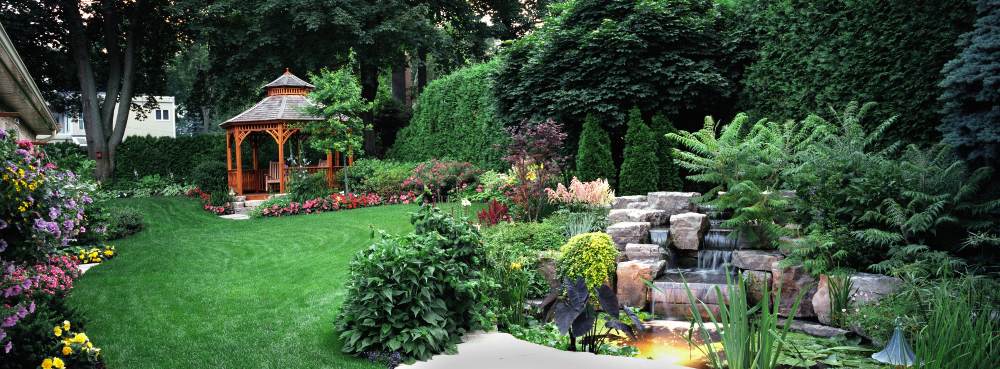What Materials Are Used in Landscaping?

Landscaping transforms the outdoor space of your home or business, enhancing not only its aesthetic appeal but also its functionality and environmental sustainability. Whether you’re a seasoned landscaper or a homeowner embarking on your first landscaping project, understanding the materials available for landscaping is crucial. This guide will explore the various materials used in landscaping, discuss the importance of investing in your landscaping, and provide insights on selecting high-quality materials to bring your landscaping ideas to life.
Why Should You Invest in Your Landscaping?
Investing in landscaping goes beyond merely beautifying your property. Well-thought-out landscaping design can increase your property’s value, improve outdoor living spaces, and even contribute to the local ecosystem’s health. Additionally, landscaping can offer personal satisfaction, creating a serene and inviting outdoor area that reflects your style and preferences. With the right landscaping materials, you can achieve both aesthetic and functional benefits, making it a worthy investment for any property owner.
10 Fundamental Types of Materials for Landscaping
Landscaping involves a wide range of materials, each serving different purposes within the landscape. Here are ten fundamental types of materials used in landscaping:
Mulch: Mulch is essential for soil moisture retention, temperature regulation, weed control, and adding a finished look to garden beds. It can be organic, such as bark or straw, or inorganic, like rubber or stones.
Soil: The foundation of any garden, quality soil is vital for plant health. It provides the nutrients and support your plants need to grow and thrive.
Topsoil: Topsoil is the topmost layer of soil, rich in organic matter and nutrients. It’s crucial for creating fertile planting beds and lawns.
Composts: Compost enriches the soil, adding essential nutrients back into it. It’s made from decomposed organic materials and is key for sustainable gardening practices.
Gravel: Gravel is versatile for landscaping, used for driveways, pathways, and as an ornamental element in gardens. It offers excellent drainage and comes in various sizes and colors.
Stones: Landscaping stones, or landscaping rocks, add texture and contrast to landscaping designs. They can be used for borders, paths, or as focal points in a garden.
Sand: Sand is used for paving and creating certain types of garden beds, such as those for cacti or succulents. It’s also essential for drainage systems.
Pavers: Pavers are hard blocks made of stone, concrete, or brick, used to create walkways, patios, and driveways. They are available in various shapes, colors, and textures, allowing for creativity in design.
Plants and Trees: The living components of landscaping, plants, and trees, are selected based on the climate, soil type, and the aesthetic the landscaper aims to achieve. They are the essence of any garden or outdoor space.
Water Features: Water features like fountains, ponds, or waterfalls add tranquility and movement to landscaping. They can be a focal point or a subtle addition to the garden.
How to Select High-Quality Materials for Your Landscape
Selecting high-quality materials for your landscape is crucial for ensuring longevity and minimizing maintenance. Here are some tips for choosing the right materials:
Research: Understand the materials’ properties and how they fit into your landscaping design and local climate.
Quality over Price: While budgeting is important, investing in high-quality materials can save you money over time by reducing maintenance and replacement costs.
Sustainability: Consider the environmental impact of the materials you choose. Whenever possible, opt for locally sourced, renewable, or recyclable materials.
Compatibility: Ensure the materials you select complement each other and fit the style of your home and garden.
Consultation: Don’t hesitate to consult with a landscaping professional. Their experience can guide you to the best materials for your specific needs and landscaping ideas.
Budgeting
Budgeting for your landscaping project is a crucial step. It involves not only the cost of materials but also installation, maintenance, and potential future upgrades. Start by prioritizing the areas of your landscape that require the most attention or will provide the most significant benefit. It’s also wise to consider phased approaches, where the project is completed in stages, allowing for financial flexibility.
Crafting Your Masterpiece: The Art of Landscaping
Landscaping is an art and science, requiring careful consideration of materials, design, and functionality. By choosing the right landscaping materials, you can create a beautiful, sustainable, and enjoyable outdoor space. Remember, each element, from the smallest pebble to the tallest tree, plays a vital role in your landscape’s overall look and health. Whether you’re embarking on a new landscaping project or revitalizing an existing one, investing time and resources into selecting the best materials will pay off in the long run, make your life easy.
Enhance Your Outdoor Space with Sandee’s Soil and Rock’s Premium Selection
Ready to elevate the curb appeal of your Ogden, UT property? Look no further than Sandee’s Soil & Rock! With nearly two decades of experience, we’re your go-to team for top-quality landscaping materials. From stunning rock formations to lush soil blends, we offer a vast selection to meet your aesthetic and functional needs. Whether you’re enhancing your home or business, our products will enrich your landscape and leave a lasting impression. As a family-owned business, we prioritize customer satisfaction above all else. Your landscape deserves the best, and we’re here to deliver! Don’t settle for an average outdoor space—contact us today online or at 801-675-4303 to discover how our top-quality landscaping materials can transform your property into a masterpiece.
